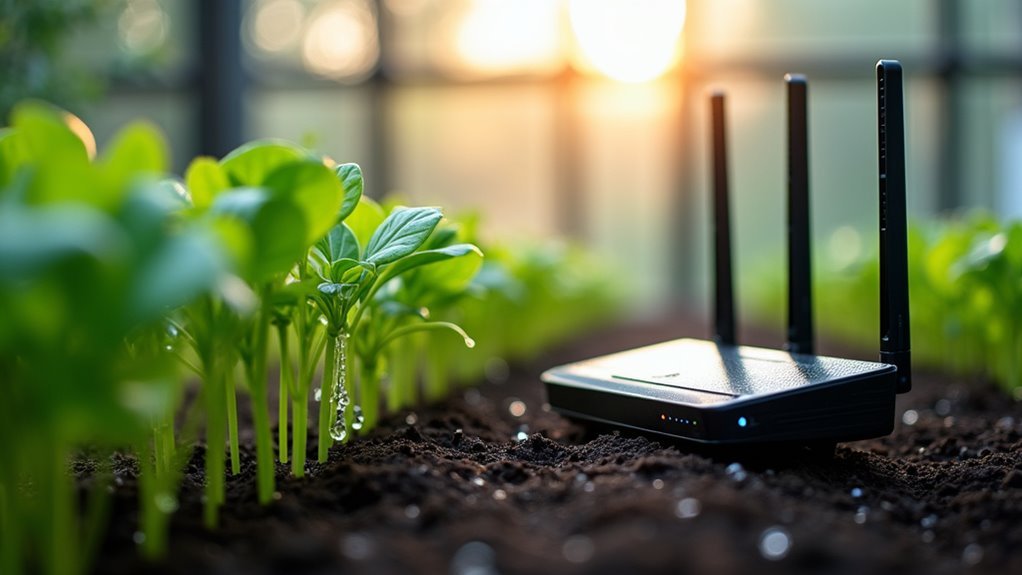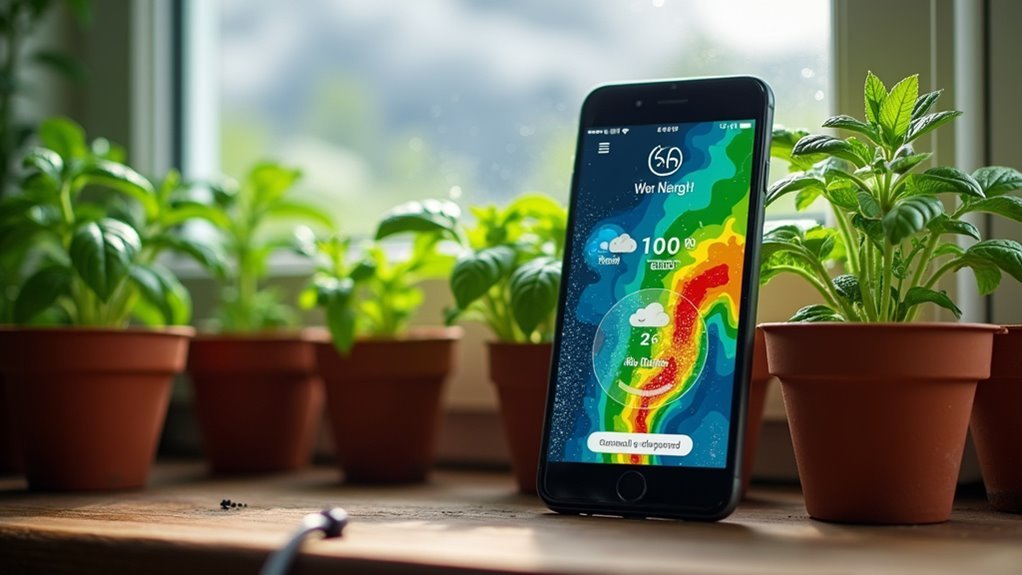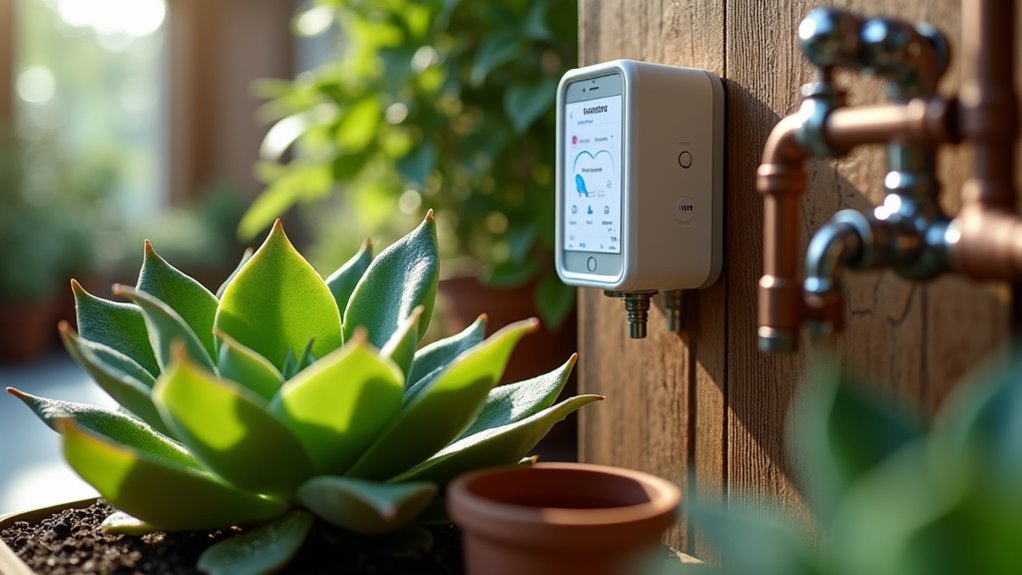You’ve invested in a smart watering system, but you’re still losing plants to overwatering or drought stress. The problem isn’t your equipment—it’s how you’re using it. Most gardeners make three critical mistakes that sabotage their WiFi watering setup from day one. These oversights can turn your high-tech solution into an expensive failure, but they’re surprisingly simple to fix once you know what to look for.
Optimize Your Network Connection for Reliable Remote Control

When you’re setting up a WiFi-enabled plant watering system, your network’s reliability determines whether your plants thrive or wither.
Position your router centrally to maximize signal strength and eliminate dead zones that’ll disrupt remote control functionality. A dual-band router lets you connect irrigation systems on the 5GHz band for speed while using 2.4GHz for extended outdoor connectivity.
Assign static IP addresses to prevent connection drops that could ignore critical plant needs. Install WiFi extenders or mesh systems where signal strength weakens.
Regular firmware updates enhance security and performance, preventing connectivity failures during essential watering cycles.
These network optimizations guarantee consistent remote control access, maximizing water savings through precise scheduling that responds to your plants’ specific requirements.
Configure Smart Sensors for Precise Moisture Management
Smart sensors transform your reliable network connection into actionable plant care by measuring soil conditions with scientific precision.
Your smart irrigation system needs real-time data to water when needed, preventing overwatering while maintaining ideal moisture levels.
Real-time sensor data enables precise watering decisions, eliminating guesswork while protecting plants from both drought stress and water damage.
Install soil moisture sensors 4-6 inches deep in your plants’ root zones for accurate readings. Choose capacitive sensors over resistive models—they’ll provide better accuracy without degrading from soil contact.
Configure your plant watering system to trigger watering when moisture drops to 30-40% content.
- Picture sensors quietly monitoring underground – detecting the exact moment your plants need hydration
- Visualize weather-based sensors reading atmospheric conditions – automatically adjusting schedules during rainstorms or droughts
- Imagine efficient water usage reducing your bills – while keeping plants perfectly hydrated through automated precision
Regularly calibrate sensors against known moisture levels for continued accuracy.
Establish Automated Scheduling With Weather Integration

Your irrigation system achieves maximum efficiency by combining real-time weather data with automated scheduling protocols.
Smart irrigation systems equipped with weather integration can reduce water usage by up to 30% compared to traditional timers. Configure your system to access weather forecasts through apps or smart home platforms, enabling automatic watering delays when rain’s predicted. This prevents unnecessary water waste while maintaining ideal soil moisture for your plants.
Schedule watering during cooler periods like early morning or late afternoon to minimize evaporation.
Integrate soil moisture sensors with automated scheduling to determine precise watering needs based on actual soil conditions rather than rigid timeframes. Implement seasonal automations that adjust duration and frequency for varying plant requirements throughout the year.
This intelligent combination guarantees your potted plants and garden receive exactly what they need while maximizing water conservation.
Frequently Asked Questions
How to Make a Smart Plant Watering System?
You’ll need a solenoid valve, smart relay like Shelly Pro 1, soil moisture sensors, and a microcontroller. Connect components, program watering schedules, integrate with home automation, and create a dashboard for remote monitoring and control.
Should You Wet the Leaves When Watering Plants?
You shouldn’t wet the leaves when watering plants. Water at soil level instead to prevent fungal diseases and promote healthier root development. Wet foliage creates conditions for mold growth, especially in humid environments.
What Is the Best Way to Automate Watering Plants?
You’ll achieve best results by installing smart irrigation systems with soil moisture sensors and WiFi-enabled relays like Shelly Pro 1. These automatically adjust watering based on real-time conditions, reducing waste considerably.
What Are the Disadvantages of a Smart Irrigation System?
You’ll face high upfront costs, complex maintenance requirements, and technology dependence issues. Power outages can disrupt watering schedules, while inaccurate sensors may cause over or under-watering problems.





Leave a Reply